Summer robotics mini-conference in Yekaterinburg
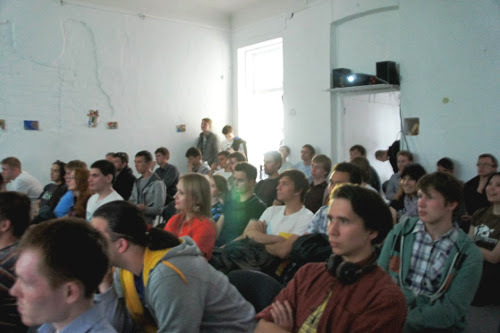 More recently, on June 7, 2014, the first joint conference of our hackspace MakeItLab and the Open Technologies Club (aka KOT) took place. A conference is of course strongly said, it is probably better to say a mini-conference.
More recently, on June 7, 2014, the first joint conference of our hackspace MakeItLab and the Open Technologies Club (aka KOT) took place. A conference is of course strongly said, it is probably better to say a mini-conference. Only four reports were read:
- Domestic Cellular Microprocessor Multiclet
- Miniature drones - ornithopters
- Quadcopters
- Report of the MakerFaire San Francisco DIY Enthusiast Festival
In fact, we conducted an experiment and a test of our forces regarding the organization of such events. And I must say, the experiment was a success! Now we are excited about scaling :)
Anticipating a large number of visitors (40-50 people), we preoccupied ourselves with a room more spacious than our modest hack space. And this time the city center of modern art (NCCA) helped us out. The benefit of their building is a 10-minute walk from us.
But back to the reports. So, four topics.
1. Domestic cell microprocessor Multiclet
Speaker: Mikhail Bakhterev, Multiclet
Hmm, how many domestic processors that can at least somehow compete with modern monsters from Intel and AMD do you know? Only Elbrus-4C comes to mind, which is unlikely to be used in household PCs.
But it turns out that there is another domestic processor with a unique architecture, and its name is Multiclet. An employee of the same company, Mikhail Bakhterev, told us about the features of this architecture.
Michael shows how the typical modern

multiclet processor works - this is an abbreviation for multicellular. Each such processor contains a certain number of so-called cells. The working model of the device has only 4 cells. The plans are to create a chip with 256 cells.
It is understood that processor cells can execute language instructions in parallel. This uses an approach unusual for traditional architecture. But in addition to parallelization, Multiclet has another important feature that makes it very interesting for the space and military industries. It consists in the fact that when individual cells fail, the processor continues to work. Such a chip is not afraid of bombardment by high-energy particles (you never know, star wars).
The same feature allows you to adjust the processor power, turning off extra cells on the go. And this is already useful for autonomous robots, which have an eternal deficit of energy.
In general, the development is very interesting and promising. I hope that the authors will bring their brainchild to a commercial version, and soon we will see this processor in domestic devices and robots.
2. Miniature drones - ornithopters
Speaker: Stepan Glushkov, MakeItLab
The next report was extremely spectacular, and caused a storm of emotions among our listeners. This time it was about robots that really want to be like living insects.
A miniature ornithopter in Stepan’s hand
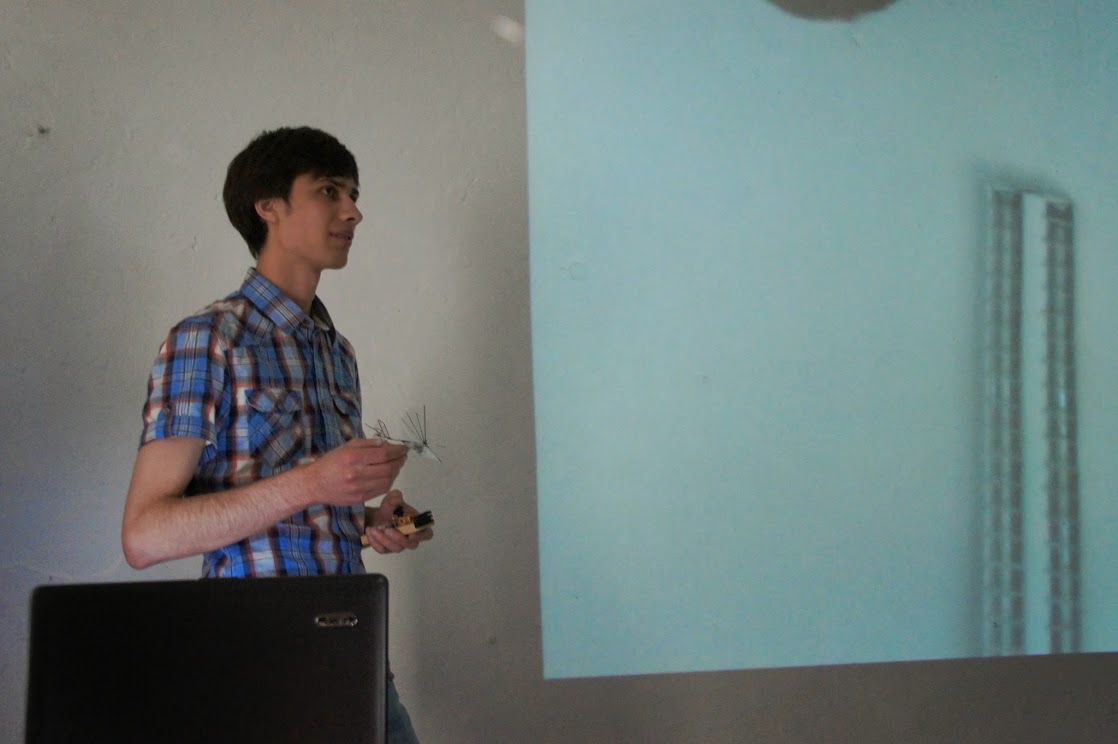
One of the few (and maybe the only one) who is engaged in such a difficult task in our country - Stepan, demonstrated his creations in action:
The first to fly was a battle-hardened four-winged ornithopter, updated by Stepan specifically for the conference. A camera was installed on board the unmanned vehicle, the image from which was broadcast directly to the projector screen!
Following him, the smallest ornithopter took to the air. This robot already had two wings, and in flight is very similar to a stray insect. The same transparent wings, the same rapid flight.
Stepan is attacked by grateful listeners :)
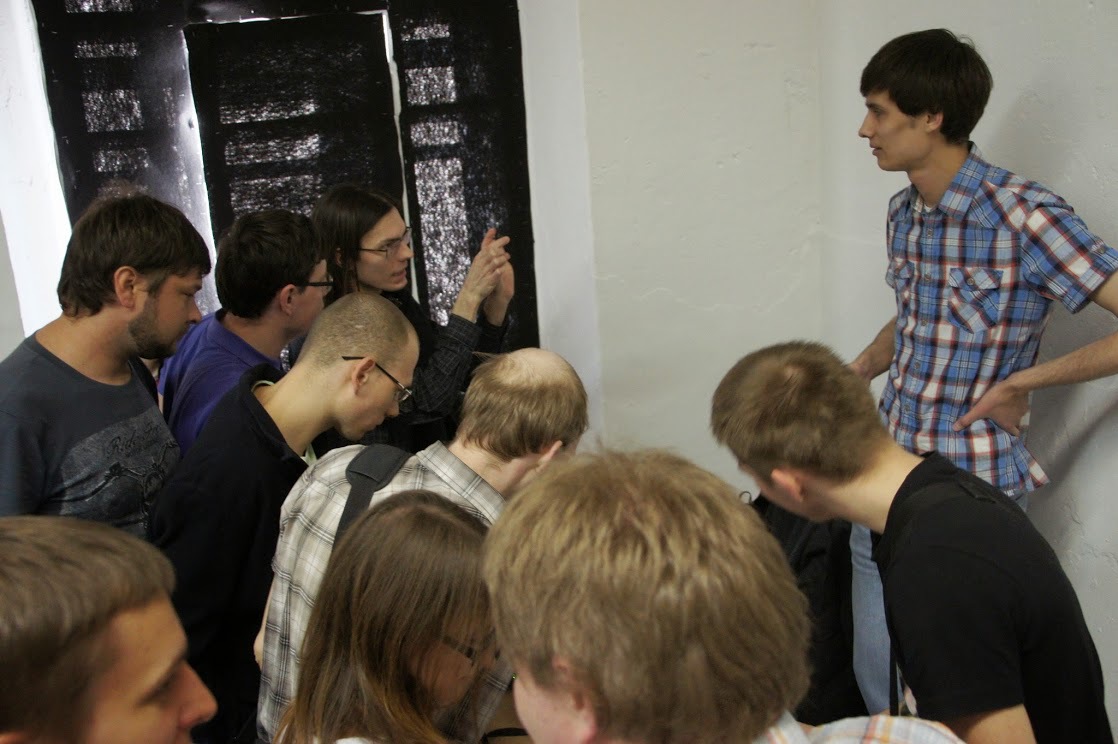
Next up is Stepan’s micro ornithopter, with a powerful brushless motor on board and an integrated stabilization subsystem. This car will be able to hang in one place, and move between waypoints. But on the way to such an ornithopter there are still many unsolved problems, including the most important thing for all autonomous robots - power.
3. Quadcopters
Speaker: Sergey Grishchenko ( ssg1712 ), URTK
The topic of unmanned flights was picked up by our colleagues and the A.Popov Ural College of Radio Engineering: Sergey Grishchenko and Alexander Vasiliev. In his report, Sergey told how the quadrocopter is designed (and any multicopter), how this machine is controlled, and how to make such a machine yourself.
Various multicopter schemes
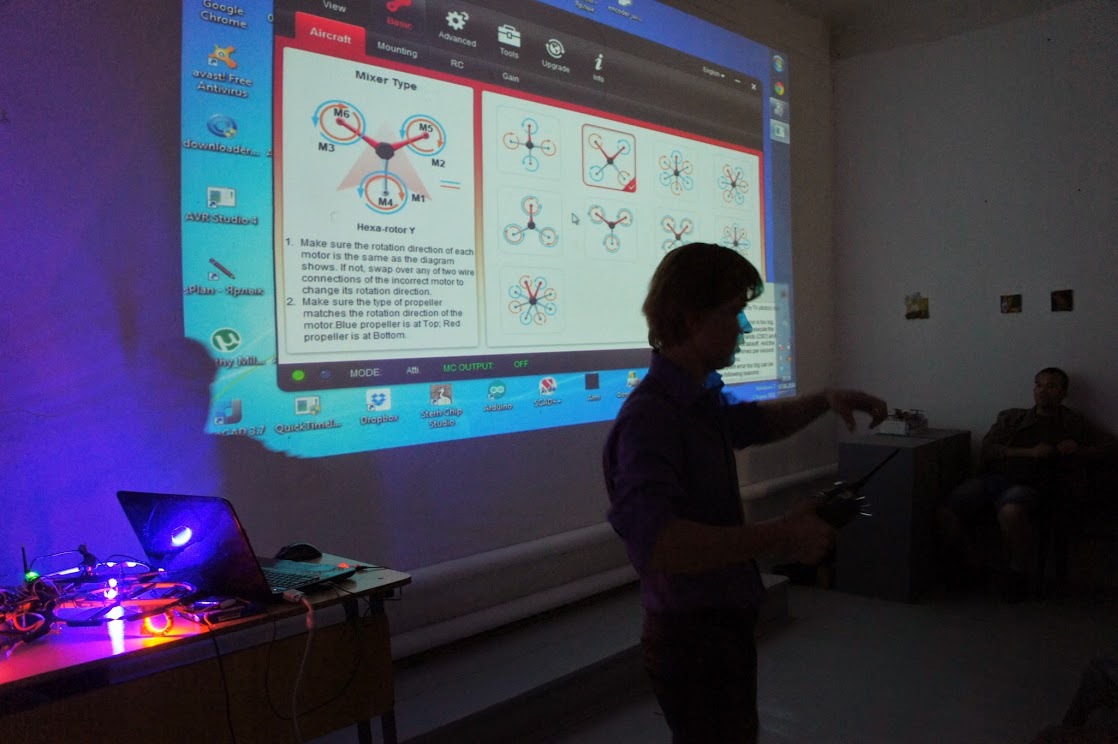
Of course, this report did not do without a demonstration of UAV flights, which the authors made on their own. Right in the hall, Alexander launched his miniature quadrocopter. Despite the fact that his device is not equipped with a full-fledged stabilization subsystem, years of training allowed the owner to skillfully hold the car in almost the same position.
Sergey’s large quadrocopter served as an excellent tool for analyzing the principles of operation of the on-board computer. But the audience could see the flight of this device only on the street (see the end of the article).
Miniature quadrocopter of Alexander Vasiliev
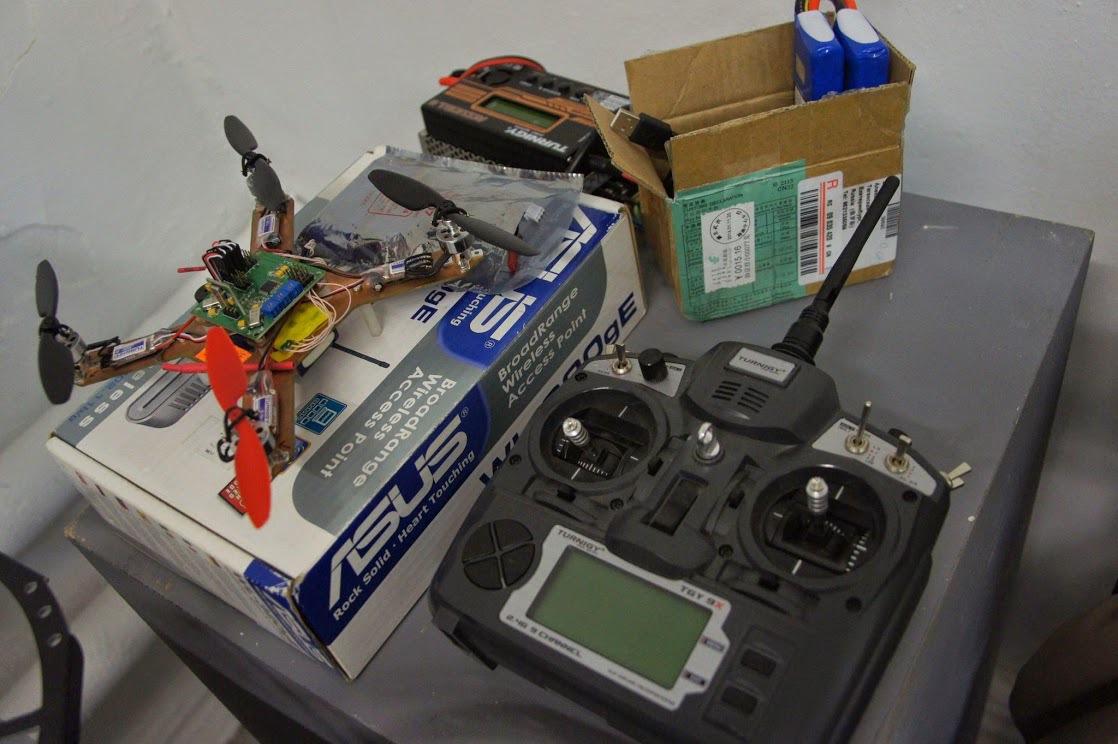
Heavy quadrocopter of Sergey Grishchenko
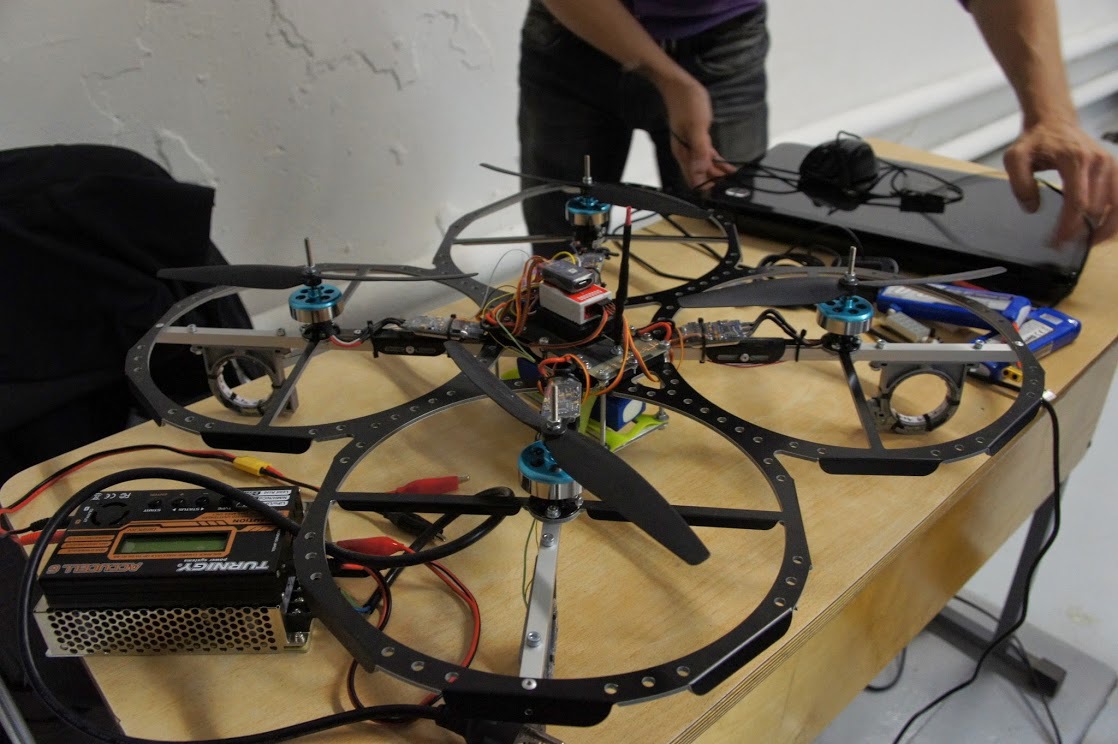
Illumination
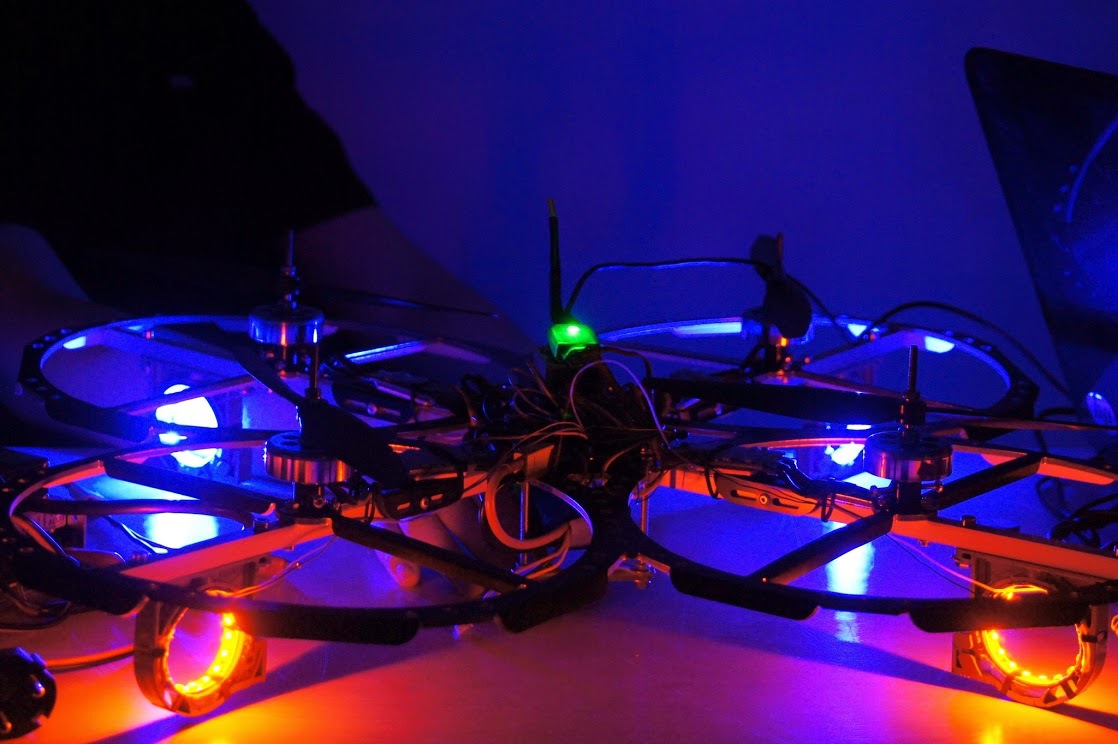
A few days after the report, the large quadrocopter was successfully modernized and lightened. Now it flies longer and further :)
4. Report on the MakerFaire San Francisco DIY Enthusiast Festival
Speaker: Oleg Evsegneev, MakeItLab
Finally, at the end of our mini-conference, your humble servant spoke about the breathtaking event that I was able to visit in San Francisco. The MakerFaire Festival is truly the coolest event for all DIY enthusiasts.
The Tale of MakerFaire in San Francisco
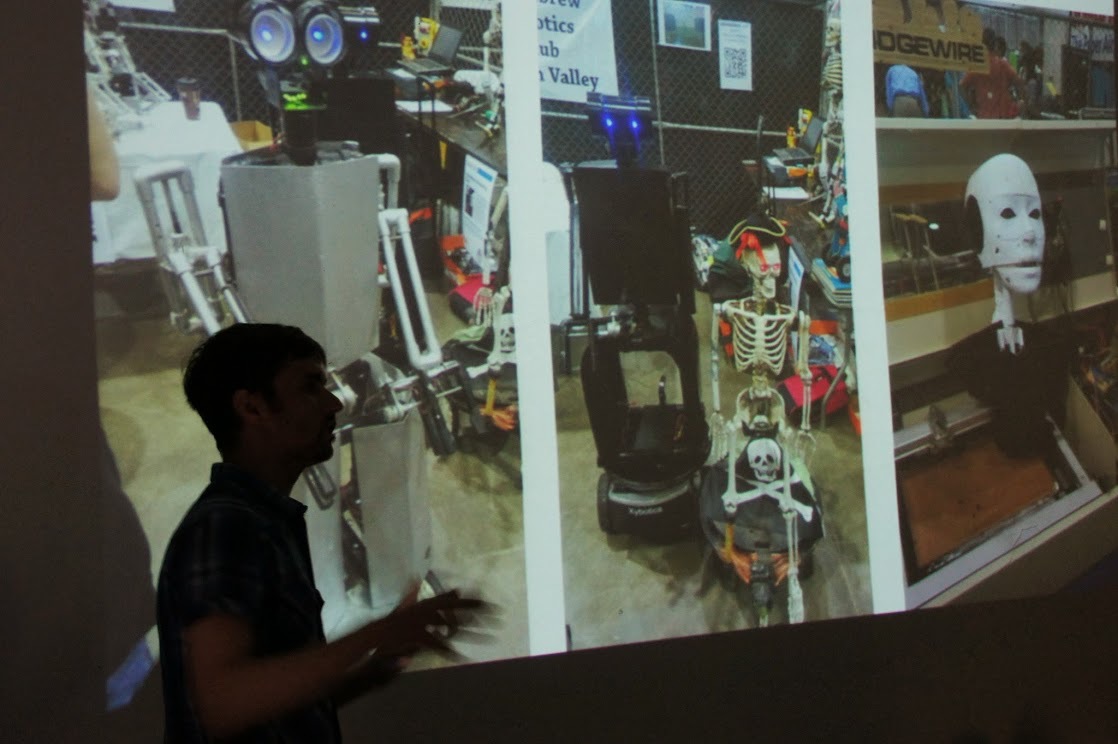
MakerFaire is a mix of fairs, an exhibition of DIY works, an exhibition of startups, various workshops and just entertainment. Moreover, of course, having a technical bias, absolutely all types of DIY were present at the festival. Starting from embroidery and growing mushrooms (yes, mushrooms), ending with 3D printers and robots.
Among the visitors to the festival, there have traditionally been many parents with children. There were many who first became acquainted with the DIY world. In general, one of the main goals of MakerFaire - the popularization of technology, turned out to be 200% complete.
To a note . A similar event will be held at the end of summer in Moscow. I don’t know what will come of it, but in any case, it’s nice to realize that the movement of makers in our country finds support from the organizers of large events. Next year, it may be possible to organize something similar in our city of Yekaterinburg.
Outdoor flights
After my prompt story, all the participants gathered in the courtyard of the Center for Contemporary Art. Exchange impressions, see how quadrocopters fly.
Summing up , once again I will say that the experiment with the organization of the mini-conference was a success. According to estimates, at one time there were up to 70 people in the hall (instead of the planned 40). Of course, it was a bit cramped and stuffy. Some were upset that the conference did not have large humanoid robots (in the name that word was "robotics"). But in general, I repeat, the mission was completed. Everyone who wanted to know what kind of beast Multiclet. We saw flights of unusual ornithopter, and available quadrocopters.
In the second half of July (after the Innoprom exhibition) we want to organize a robotic conference again. If you have interesting projects that you want to talk about, we will be glad to see you among the speakers! More detailed information about the upcoming event will certainly appear in our VK group., on Facebook and on Twitter .
